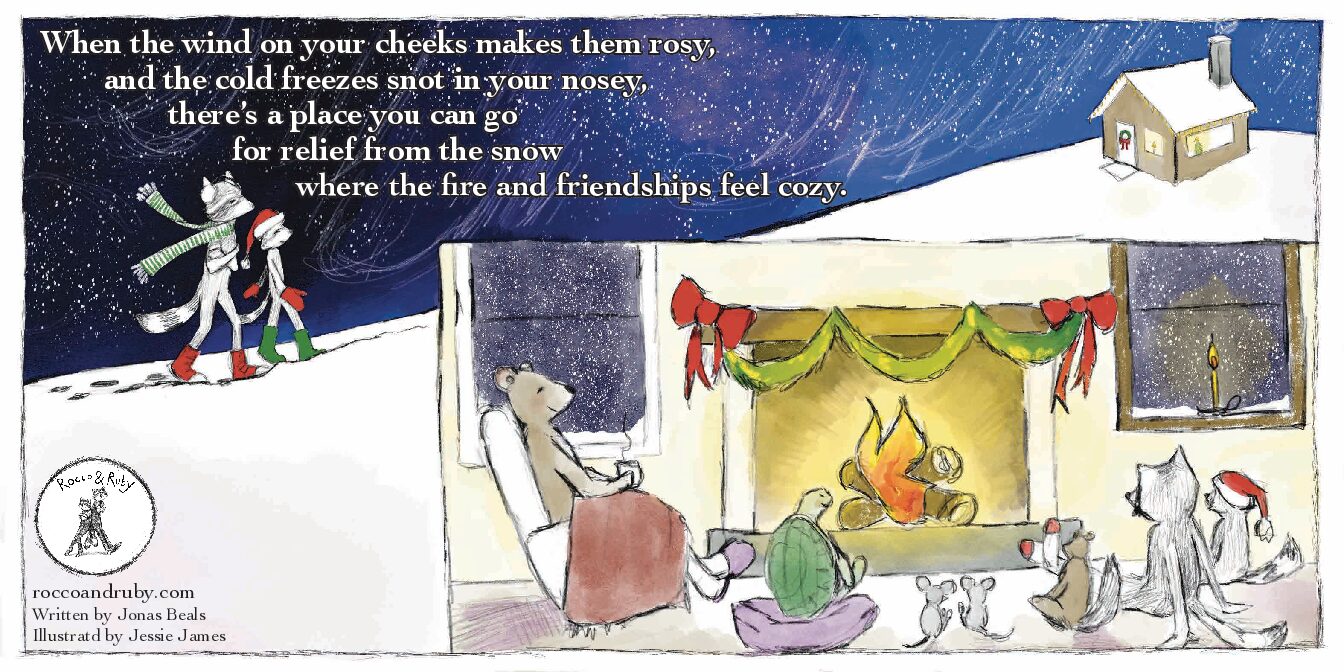
Several people have asked about the upcoming winter season and whether they should get ready for snow or prepare for another mild winter.
The last three winters were very mild with temperatures well above normal and almost no significant snow. Our last big winter storm was Jan 2022 when around 12” of heavy wet snow blanketed the region. This was a terrible week for many as trees and power lines became snow-laden and crashed to the ground. Some were without power for about a week. The previous big winter storm was the Blizzard of Jan 2016. We tend to get big winter storms about once every 4-5 years, so we are approaching the “we are overdue” stage.
Many were calling for lots of snow last year, due to El Niño. During El Niño winters, we usually get plenty of coastal storms, which we did, but we never had enough cold air to support much snow. We got plenty of heavy rainfall that ended our drought.
This year La Niña will be the main large-scale weather feature that will guide the season. La Niña means “Little Girl” and is defined as a cooling of the Equatorial Pacific waters. This causes a northward shift in the Polar Jet Stream across the Pacific Ocean, then it dives southeast into the northeastern United States. This generally causes warm and somewhat wetter conditions over the interior Northeastern United States. Virginia should be warmer than normal, but it looks like a wet winter is a 50/50-coin toss. On average, La Niña years are less snowy than other years for our region.
Predicting winter snowfall for a particular area is impossible. This is especially true for the Mid-Atlantic region since most of our winter storms are dependent on tracks of Nor’easter storms that ride up the coast. Trying to predict the smaller scale features that support these storms is just not possible this far in advance. It’s best to wait until we see something in the models about a week out before mentioning snow.
One concern I have with La Niña years is that we tend to see more frequent periods of very shallow intrusions of cold Arctic air. The shallow nature of these events usually produces more freezing rain/sleet events versus snow.
Seasonal Snowfall averages for Louisa County Airport:
Nov 0.5”, Dec 2.2”, Jan 3.5”, Feb 4.2”, Mar 1.0”

I grew up an Air Force Brat. Traveled the country and lived in Georgia, Maine, New York, Hawaii and Oklahoma.
I fell in love with the weather in Oklahoma. My father was transferred to Tinker AFB in 1973. While in Temporary housing (a mobile home, which is the standard in Oklahoma) I experienced my first severe thunderstorm with strong winds and hail the size of baseballs. The next day I was in the base library looking up books on weather. The rest is history.
I graduated from the University of Oklahoma in 1983 with a Bachelor’s Degree in Meteorology. The first two years we took Calculus, Differential equations, Physics, Chemistry and Computer science classes with the Engineering Students. It was a grind. My degree is actually from the College of Engineering. The last 2-3 year’s focus was on Meteorology including Observational networks (Satellite, Radar, Surface), Physics, Thermodynamics, Dynamics, Synoptic, Winter Weather, Severe Weather and Climatology.
My first job out of college was with a small forecasting company in Oklahoma City. I was immediately put on TV (OETA) and Radio (WKY) as their broadcast Meteorologist. After two years in broadcasting, I decided to pursue the National Weather Service route and got a position in Toledo, OH as an intern. After a couple of years, I was promoted to a forecaster position at the Cleveland Forecast office. I quickly moved into the Weather Preparedness position and was responsible for all the preparedness activities in the state of Ohio.
In 1992 I decided to pursue other forecast opportunities and moved to the Meteorological Operations Division of the National Meteorological Center in Washington, DC. This group is now called WPC (Weather Prediction Center). There I fine-tuned my forecasting of Synoptic Weather with my focus on Heavy Convective Rainfall and Winter Storms, under the supervision of Dr. Louis Uccellini. He has written several books on East Coast Winter storms. I was promoted to a Senior Branch Forecast position during my tenure at MOD. Part of my job was to teach weather classes at COMET (Cooperative Program for Operational Meteorology, Education, and Training).
In 2012 I was given the opportunity to start up a new weather support group with the FAA (Federal Aviation Administration) in Warrenton, VA at the ATCSSC (Air Traffic Control System Command Center). The ATCSCC is where the FAA identifies solutions to air traffic inefficiencies in the NAS (National Air Space) for the CONUS (Continental United State). Weather impacts are the biggest impact on Aviation with yearly losses over 20 billion dollars. My job was to help lower these inefficiencies/costs by providing weather impact briefings and forecasts in order to keep the air planes moving as safely and efficiently as possible.
I retired in 2022 and now am running Lake Anna Weather, LLC.
Subscribe for Updates
Sponsors
latest articles
Letter from the Editor: Grateful for Our Students

New Rotary Charter Lights Up Patriotism with Flags for Heroes

Lake Anna Region Faces Moderate to Severe Drought

Powering the Lighted Boat Parade: Leaders Behind the Lights

Rocco & Ruby

Travel: Sleep in a Tugboat, Wander to Waterfalls at Lake Glen Haven

Several people have asked about the upcoming winter season and whether they should get ready for snow or prepare for another mild winter.
The last three winters were very mild with temperatures well above normal and almost no significant snow. Our last big winter storm was Jan 2022 when around 12” of heavy wet snow blanketed the region. This was a terrible week for many as trees and power lines became snow-laden and crashed to the ground. Some were without power for about a week. The previous big winter storm was the Blizzard of Jan 2016. We tend to get big winter storms about once every 4-5 years, so we are approaching the “we are overdue” stage.
Many were calling for lots of snow last year, due to El Niño. During El Niño winters, we usually get plenty of coastal storms, which we did, but we never had enough cold air to support much snow. We got plenty of heavy rainfall that ended our drought.
This year La Niña will be the main large-scale weather feature that will guide the season. La Niña means “Little Girl” and is defined as a cooling of the Equatorial Pacific waters. This causes a northward shift in the Polar Jet Stream across the Pacific Ocean, then it dives southeast into the northeastern United States. This generally causes warm and somewhat wetter conditions over the interior Northeastern United States. Virginia should be warmer than normal, but it looks like a wet winter is a 50/50-coin toss. On average, La Niña years are less snowy than other years for our region.
Predicting winter snowfall for a particular area is impossible. This is especially true for the Mid-Atlantic region since most of our winter storms are dependent on tracks of Nor’easter storms that ride up the coast. Trying to predict the smaller scale features that support these storms is just not possible this far in advance. It’s best to wait until we see something in the models about a week out before mentioning snow.
One concern I have with La Niña years is that we tend to see more frequent periods of very shallow intrusions of cold Arctic air. The shallow nature of these events usually produces more freezing rain/sleet events versus snow.
Seasonal Snowfall averages for Louisa County Airport:
Nov 0.5”, Dec 2.2”, Jan 3.5”, Feb 4.2”, Mar 1.0”

I grew up an Air Force Brat. Traveled the country and lived in Georgia, Maine, New York, Hawaii and Oklahoma.
I fell in love with the weather in Oklahoma. My father was transferred to Tinker AFB in 1973. While in Temporary housing (a mobile home, which is the standard in Oklahoma) I experienced my first severe thunderstorm with strong winds and hail the size of baseballs. The next day I was in the base library looking up books on weather. The rest is history.
I graduated from the University of Oklahoma in 1983 with a Bachelor’s Degree in Meteorology. The first two years we took Calculus, Differential equations, Physics, Chemistry and Computer science classes with the Engineering Students. It was a grind. My degree is actually from the College of Engineering. The last 2-3 year’s focus was on Meteorology including Observational networks (Satellite, Radar, Surface), Physics, Thermodynamics, Dynamics, Synoptic, Winter Weather, Severe Weather and Climatology.
My first job out of college was with a small forecasting company in Oklahoma City. I was immediately put on TV (OETA) and Radio (WKY) as their broadcast Meteorologist. After two years in broadcasting, I decided to pursue the National Weather Service route and got a position in Toledo, OH as an intern. After a couple of years, I was promoted to a forecaster position at the Cleveland Forecast office. I quickly moved into the Weather Preparedness position and was responsible for all the preparedness activities in the state of Ohio.
In 1992 I decided to pursue other forecast opportunities and moved to the Meteorological Operations Division of the National Meteorological Center in Washington, DC. This group is now called WPC (Weather Prediction Center). There I fine-tuned my forecasting of Synoptic Weather with my focus on Heavy Convective Rainfall and Winter Storms, under the supervision of Dr. Louis Uccellini. He has written several books on East Coast Winter storms. I was promoted to a Senior Branch Forecast position during my tenure at MOD. Part of my job was to teach weather classes at COMET (Cooperative Program for Operational Meteorology, Education, and Training).
In 2012 I was given the opportunity to start up a new weather support group with the FAA (Federal Aviation Administration) in Warrenton, VA at the ATCSSC (Air Traffic Control System Command Center). The ATCSCC is where the FAA identifies solutions to air traffic inefficiencies in the NAS (National Air Space) for the CONUS (Continental United State). Weather impacts are the biggest impact on Aviation with yearly losses over 20 billion dollars. My job was to help lower these inefficiencies/costs by providing weather impact briefings and forecasts in order to keep the air planes moving as safely and efficiently as possible.
I retired in 2022 and now am running Lake Anna Weather, LLC.
Subscribe for Updates
Sponsors
latest articles
Letter from the Editor: Grateful for Our Students

New Rotary Charter Lights Up Patriotism with Flags for Heroes

Lake Anna Region Faces Moderate to Severe Drought

Powering the Lighted Boat Parade: Leaders Behind the Lights

Rocco & Ruby

Travel: Sleep in a Tugboat, Wander to Waterfalls at Lake Glen Haven

Spotsylvania Tourism Growth Outpaces Statewide Averages with 35% Surge Since 2019
Article By Jen Bailey
![Featured image for “[Spotsylvania] New Speed Enforcement in School Zones”](https://lakeanna.online/wp-content/uploads/2025/09/Blog-pic-scaled.jpg)
[Spotsylvania] New Speed Enforcement in School Zones
Article By Jen Bailey








